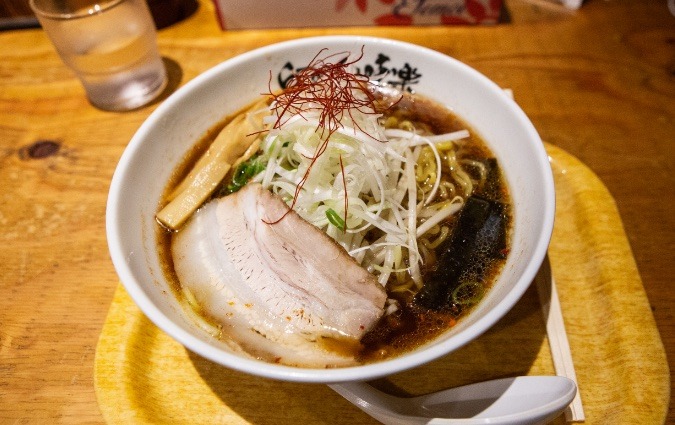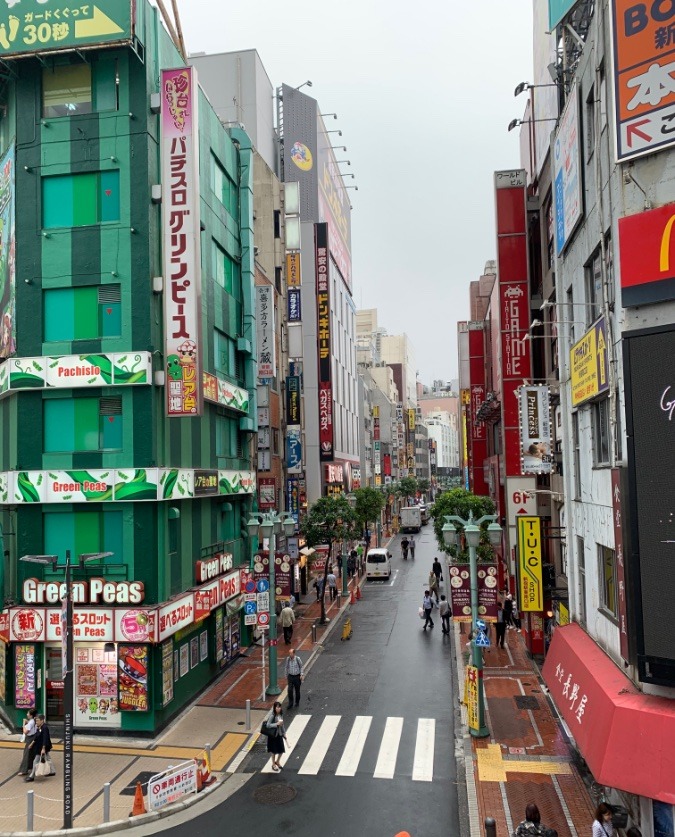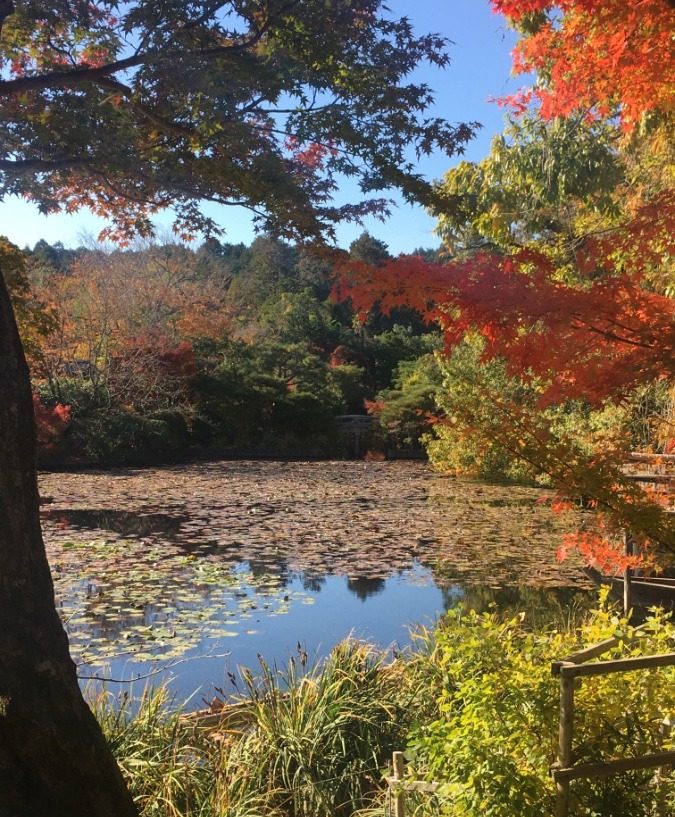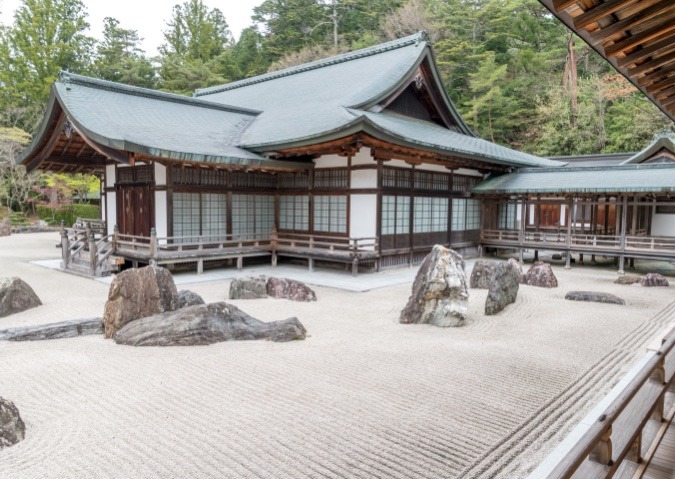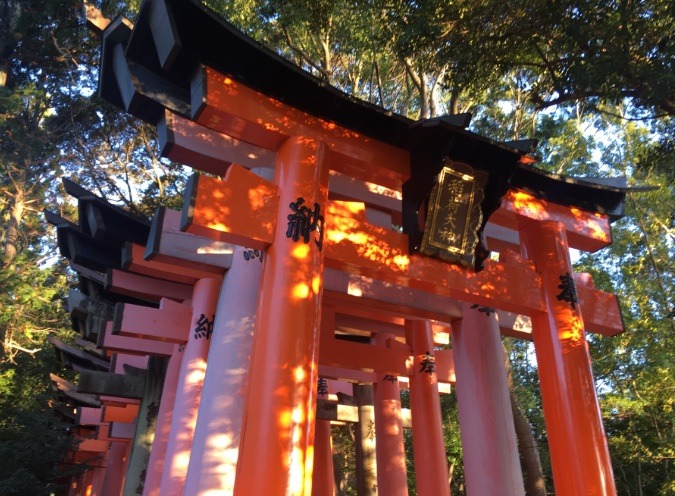- 2025 Dates
June 26 — July 17
July 10 — July 31
- tuition
Japan
Ancient Culture in a Modern World
- 2025 Dates
June 26 — July 17
July 10 — July 31
- tuition
Experience the blend of culture, modernity, and tradition that make up the fabric of life in contemporary Japan. Explore neon-soaked streets in Tokyo and Osaka and historical sites in Kyoto. Travel the countryside and see traditional living in Gassho houses. Get hands-on with traditional food and crafts. Experience the harmony of tea at a chadō ceremony, ride the world’s fastest trains, see the fashion in Harajuku, and relax in hot springs on a journey through Japan’s past and present.
- Highlights
• Experience Shinto and Buddhism at shrines and temples
• Learn to draw with a professional illustrator in an anime drawing class
• Relax in picturesque hot-springs, wear yukata, and sleep on tatami
Itinerary
This itinerary represents our best projection of the group’s schedule. However, we may implement changes designed to improve the quality of the program.
Meet your fellow high school student travelers and one or more of your program leaders in San Francisco, California, and fly together to Osaka, Japan. To learn more about how we organize travel, click here.
Get to know your group in Japan’s second-largest city, and the hub of the Kansai region. Osaka is known as the “nation’s kitchen” for its incredible breadth of cuisine. Try local street foods like taiyaki and takoyaki as you stroll through the dazzling lights and signage of Dotonbori street along the Kizu River. From this centrally located hub in Kansai, Honshu’s western region, take short train rides to some of the most iconic locations in Japan, including Himeji Castle and Nara’s Giant Buddha. Along the way, learn about some of the most famous samurai battles in Japanese history and the cultural context that informs modern Japan.
Venture away from the busy Pacific coast and into the rice paddies to explore the rural side of Japan. Stay in a traditional Ryokan inn, eat incredible local wagyu delicacies, and take opportunities to enjoy rejuvenating hot springs, wear traditional yukata, meet local people, and immerse yourself in guided activities that will teach you about local ceramics, soba, and other specialties. Discover one of Japan's "Nihon Sankei," or "Three Most Beautiful Views," at Amanohashidate. The beaches surrounding Miyazu Bay offer an idyllic setting for cycling amid ancient pines or basking in the sun by the waves.
Head to the former imperial capital of Kyoto, home to more than 2,000 shrines and temples. Spared bombardments in World War II due to its unique cultural significance, this stop showcases some of Japan’s most important cultural places. As a former imperial capital city, this major urban hub is an incredible mix of modernity and history. Try some traditional shimesaba oshizushi, stroll the shops along the Kamo river, and experience a traditional chadō tea ceremony. Hike the iconic row of orange torii gates leading to Fushimi Inari Taisha for a spectacular view of the city. Visit Kyomizu Temple, see the garden at Ryoanji, and explore the International Manga Museum.
Make a brief stop in Kanazawa, sometimes called “little Kyoto” for its abundance of intact cultural sites. Visit the incredible, sprawling garden complex of Kenroku-En, established by the Maeda clan hundreds of years ago in the Edo era. Decorate your own chopsticks with gold leaf in the local products center, one of Japan’s last producers of traditional gold-leaf decorations. Explore the scenery and beauty of nearby Hakusan National Park and the towering peak of Mt Haku, one of Japan’s three holy mountains before heading to the final stop on your program: Tokyo.
Return to urban Japanese life as you hop the shinkansen bullet train to the iconic mega-city of Tokyo, one of the largest cities in the world. Celebrate the end of your journey at iconic spots in Japan: Meiji-Jingu and Harajuku, Toyoosu fish market, Sensō-ji, and more within easy striking distance from centrally located accommodations. Travel by ferry to the Odaiba district to explore the cutting edge of technology and robots at the Miraikan Museum, and experience an immersive digital art and light world at teamLab Borderless. For a dose of Japanese pop culture, hit Takeshita street in the Harajuku district and take in the burst of candy-colored stores, playful Tokyo fashion, and theme cafes. Spend your last night celebrating your experience with your group before bidding sayōnara to Japan.
Fly from Tokyo, Japan, to San Francisco with your group and a leader, then continue on to your final destination. To learn more about how we organize travel, click here.
Itinerary
This itinerary represents our best projection of the group’s schedule. However, we may implement changes designed to improve the quality of the program.
Meet your fellow high school student travelers and one or more of your program leaders in San Francisco, California, and fly together to Osaka, Japan. To learn more about how we organize travel, click here.
Get to know your group in Japan’s second-largest city, and the hub of the Kansai region. Osaka is known as the “nation’s kitchen” for its incredible breadth of cuisine. Try local street foods like taiyaki and takoyaki as you stroll through the dazzling lights and signage of Dotonbori street along the Kizu River. From this centrally located hub in Kansai, Honshu’s western region, take short train rides to some of the most iconic locations in Japan, including Himeji Castle and Nara’s Giant Buddha. Along the way, learn about some of the most famous samurai battles in Japanese history and the cultural context that informs modern Japan.
Venture away from the busy Pacific coast and into the rice paddies to explore the rural side of Japan. Stay in a traditional Ryokan inn, eat incredible local wagyu delicacies, and take opportunities to enjoy rejuvenating hot springs, wear traditional yukata, meet local people, and immerse yourself in guided activities that will teach you about local ceramics, soba, and other specialties. Discover one of Japan's "Nihon Sankei," or "Three Most Beautiful Views," at Amanohashidate. The beaches surrounding Miyazu Bay offer an idyllic setting for cycling amid ancient pines or basking in the sun by the waves.
Head to the former imperial capital of Kyoto, home to more than 2,000 shrines and temples. Spared bombardments in World War II due to its unique cultural significance, this stop showcases some of Japan’s most important cultural places. As a former imperial capital city, this major urban hub is an incredible mix of modernity and history. Try some traditional shimesaba oshizushi, stroll the shops along the Kamo river, and experience a traditional chadō tea ceremony. Hike the iconic row of orange torii gates leading to Fushimi Inari Taisha for a spectacular view of the city. Visit Kyomizu Temple, see the garden at Ryoanji, and explore the International Manga Museum.
Make a brief stop in Kanazawa, sometimes called “little Kyoto” for its abundance of intact cultural sites. Visit the incredible, sprawling garden complex of Kenroku-En, established by the Maeda clan hundreds of years ago in the Edo era. Decorate your own chopsticks with gold leaf in the local products center, one of Japan’s last producers of traditional gold-leaf decorations. Explore the scenery and beauty of nearby Hakusan National Park and the towering peak of Mt Haku, one of Japan’s three holy mountains before heading to the final stop on your program: Tokyo.
Return to urban Japanese life as you hop the shinkansen bullet train to the iconic mega-city of Tokyo, one of the largest cities in the world. Celebrate the end of your journey at iconic spots in Japan: Meiji-Jingu and Harajuku, Toyoosu fish market, Sensō-ji, and more within easy striking distance from centrally located accommodations. Travel by ferry to the Odaiba district to explore the cutting edge of technology and robots at the Miraikan Museum, and experience an immersive digital art and light world at teamLab Borderless. For a dose of Japanese pop culture, hit Takeshita street in the Harajuku district and take in the burst of candy-colored stores, playful Tokyo fashion, and theme cafes. Spend your last night celebrating your experience with your group before bidding sayōnara to Japan.
Fly from Tokyo, Japan, to San Francisco with your group and a leader, then continue on to your final destination. To learn more about how we organize travel, click here.
The archipelago of Japan, known to the Japanese as "Nihon" or "Nippon", marks the eastern edge of Asia. Although Japan is a relatively small country in size, its global historical and cultural impact is large. Japanese inhabitants are well known for their quirky, exaggerated cultural arts such as anime and manga, and their food has become something of a global staple. When thinking of Japan, people often imagine Tokyo's bustling metropolis with 37 million inhabitants. However, the majority of Japan's land boasts a more natural setting, with 67% of the islands covered in forests. The Japanese imperial family is the longest unbroken monarchy in the world, stretching back more than 2,000 years. The primary belief systems in Japan are Shintoism and Buddhism.
Japanese is the national language of Japan. There are a large number of dialects, with the Tokyo dialect considered standard Japanese.
Japan is very humid during the summer months, with temperatures ranging from 80–95°F (27–35°C), with a rainy season from mid June to early July.
Japanese food has become famous worldwide in recent years. Dishes like sushi, udon, and miso soup are now widely enjoyed. The Japanese have also adapted and changed other Asian dishes in unique ways, such as ramen and gyoza from China, Korean barbecue, and curry from India. Japanese people are known for their love of "umami" which is a “deep richness of flavor.” Primarily their foods get umami from a traditional mix of fish broth (dashi), “kombu” seaweed, and a traditional sweet cooking wine called “mirin.” Today, most Western foods like pasta and sandwiches are also available in modern Japan, though they are often slightly altered.
The archipelago of Japan, known to the Japanese as "Nihon" or "Nippon", marks the eastern edge of Asia. Although Japan is a relatively small country in size, its global historical and cultural impact is large. Japanese inhabitants are well known for their quirky, exaggerated cultural arts such as anime and manga, and their food has become something of a global staple. When thinking of Japan, people often imagine Tokyo's bustling metropolis with 37 million inhabitants. However, the majority of Japan's land boasts a more natural setting, with 67% of the islands covered in forests. The Japanese imperial family is the longest unbroken monarchy in the world, stretching back more than 2,000 years. The primary belief systems in Japan are Shintoism and Buddhism.
Japanese is the national language of Japan. There are a large number of dialects, with the Tokyo dialect considered standard Japanese.
Japan is very humid during the summer months, with temperatures ranging from 80–95°F (27–35°C), with a rainy season from mid June to early July.
Japanese food has become famous worldwide in recent years. Dishes like sushi, udon, and miso soup are now widely enjoyed. The Japanese have also adapted and changed other Asian dishes in unique ways, such as ramen and gyoza from China, Korean barbecue, and curry from India. Japanese people are known for their love of "umami" which is a “deep richness of flavor.” Primarily their foods get umami from a traditional mix of fish broth (dashi), “kombu” seaweed, and a traditional sweet cooking wine called “mirin.” Today, most Western foods like pasta and sandwiches are also available in modern Japan, though they are often slightly altered.
What to Expect
Review specific program expectations here. For more general information:
To learn more about our Exploration programs click here.
Pursue an independent project and explore an aspect of local culture of particular interest to you. Sample the breadth of Japanese cuisine, from sushi to ramen, create a series of photos cataloging Japanese pop culture, or design your own anime storyboard.
To encourage full engagement and immersion in the Putney travel experience, we limit the use of cell phones and other devices on our High School programs. Students are allowed to use their phones in transit to the program, and keep their devices throughout. During in-country orientation, leaders will lock phones with a code, unlocking them for the second half of the program. During the tech-free portion of the program, students have the opportunity for a weekly call home according to a pre-arranged schedule. For more details, please see our FAQ.
This is a physically active summer travel program. You can expect to hike on mountain terrain, walk and take public transport in cities, swim, and participate in taiko drumming or festival dancing. You do not need to be at peak fitness to participate, but it is important that you have a desire to be physically active, and that you are excited about trying all activities.
The group stays at a variety of residences on this program. While in Tokyo, Kyoto, and Osaka, we stay in local hotels, typically in double rooms with twin beds. When visiting Tajima we enjoy simple accommodations in rooms with traditional tatami floor mats and Japanese futon mattresses. In Tajima, we will have the option to use the public baths for onsen. Several hotels provide laundry facilities.
We enjoy breakfast each morning at our accommodations, which offer both traditional Japanese breakfast and typical Western-style options. For lunches and dinners, we eat together either at restaurants or head to a local market to shop for a picnic. Please note that some dietary restrictions and some allergies can be very challenging in Japan (Halal, Kosher, Vegetarian/Vegan, Celiac, shellfish allergy) and may require additional advance preparation. Please contact us about dietary needs to discuss.
What to Expect
Review specific program expectations here. For more general information:
To learn more about our Exploration programs click here.
Pursue an independent project and explore an aspect of local culture of particular interest to you. Sample the breadth of Japanese cuisine, from sushi to ramen, create a series of photos cataloging Japanese pop culture, or design your own anime storyboard.
To encourage full engagement and immersion in the Putney travel experience, we limit the use of cell phones and other devices on our High School programs. Students are allowed to use their phones in transit to the program, and keep their devices throughout. During in-country orientation, leaders will lock phones with a code, unlocking them for the second half of the program. During the tech-free portion of the program, students have the opportunity for a weekly call home according to a pre-arranged schedule. For more details, please see our FAQ.
This is a physically active summer travel program. You can expect to hike on mountain terrain, walk and take public transport in cities, swim, and participate in taiko drumming or festival dancing. You do not need to be at peak fitness to participate, but it is important that you have a desire to be physically active, and that you are excited about trying all activities.
The group stays at a variety of residences on this program. While in Tokyo, Kyoto, and Osaka, we stay in local hotels, typically in double rooms with twin beds. When visiting Tajima we enjoy simple accommodations in rooms with traditional tatami floor mats and Japanese futon mattresses. In Tajima, we will have the option to use the public baths for onsen. Several hotels provide laundry facilities.
We enjoy breakfast each morning at our accommodations, which offer both traditional Japanese breakfast and typical Western-style options. For lunches and dinners, we eat together either at restaurants or head to a local market to shop for a picnic. Please note that some dietary restrictions and some allergies can be very challenging in Japan (Halal, Kosher, Vegetarian/Vegan, Celiac, shellfish allergy) and may require additional advance preparation. Please contact us about dietary needs to discuss.
A Day in the Life: Tajima
- Morning
- Afternoon
- Evening
A Day in the Life:
Tajima
- Morning
- Afternoon
- Evening

Program Directed by
If you have questions or would like to talk further about this program, please get in touch!




